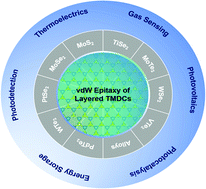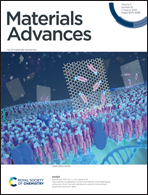van der Waals epitaxy of transition metal dichalcogenides via molecular beam epitaxy: looking back and moving forward
Abstract
Initiated by the discovery of graphene, tremendous research advances have been witnessed in the field of two-dimensional (2D) transition metal dichalcogenides (TMDCs) in the past few years. The unique optical and electrical properties of these layered TMDCs due to their well-defined low dimensionalities make them promising building blocks for next-generation electronics. Recently, a lot of research interest has been focussed on the growth of high-quality and large-area epilayers of several TMDCs using molecular beam epitaxy (MBE), owing to their ultra-high vacuum environment. The capability to precisely control the composition, thickness, and structural phases of TMDCs by MBE makes it suitable for studying fundamental sciences, investigating technological applications, and exploring new physics, which possibly could lead to fascinating applications. In the current perspective, an overview of the basic properties of TMDCs has been discussed, followed by the recent advancements in this area of the growth of TMDC thin films by MBE. Finally, the authors’ viewpoints highlight this emerging research field's key challenges and opportunities.

- This article is part of the themed collection: Recent Review Articles


 Please wait while we load your content...
Please wait while we load your content...